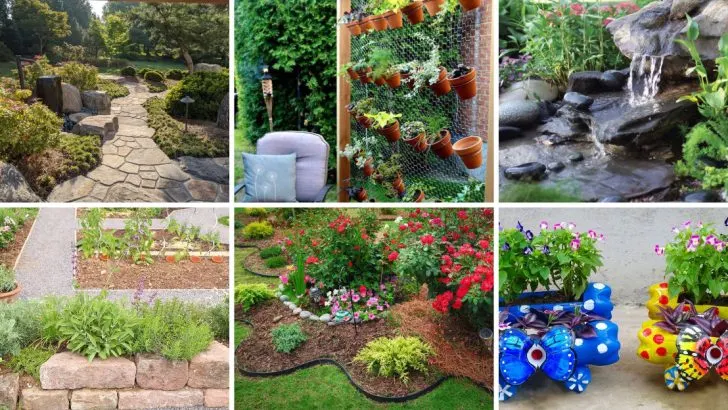Landscaping doesn’t have to drain your bank account to look thoughtfully designed. In fact, a few small changes—done right—can completely shift the feel of your outdoor space without calling in a full crew or racking up a huge bill. The trick is knowing where to put your energy and what actually makes a visual impact.
From clever edging ideas to ways of using everyday materials in unexpected ways, there are plenty of design-forward updates that cost a lot less than they look. These 23 tips are all about working smarter, not spending more—and they prove that a great-looking yard isn’t just for people with huge budgets.
Natural Stone Pathways
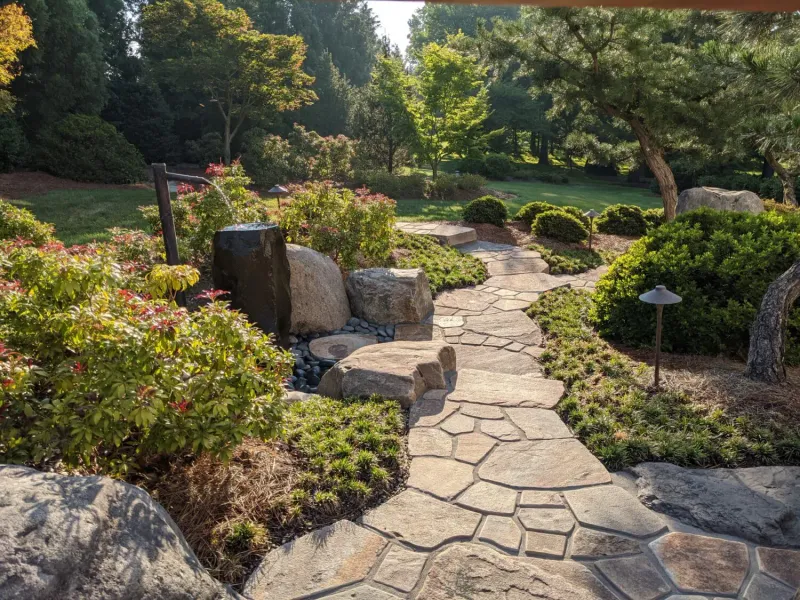
Imagine a garden where every step you take is a journey through nature. Natural stone pathways offer an enchanting way to navigate your garden, adding texture and depth. These pathways can be crafted from locally sourced stones, keeping costs low while maintaining a natural aesthetic. By arranging stones in an irregular pattern, you create a path that feels as though it was carved by nature itself. This approach not only saves money but also enhances the garden’s charm. Whether leading to a secluded nook or a blooming flower bed, these paths invite exploration and discovery.
Vertical Gardens
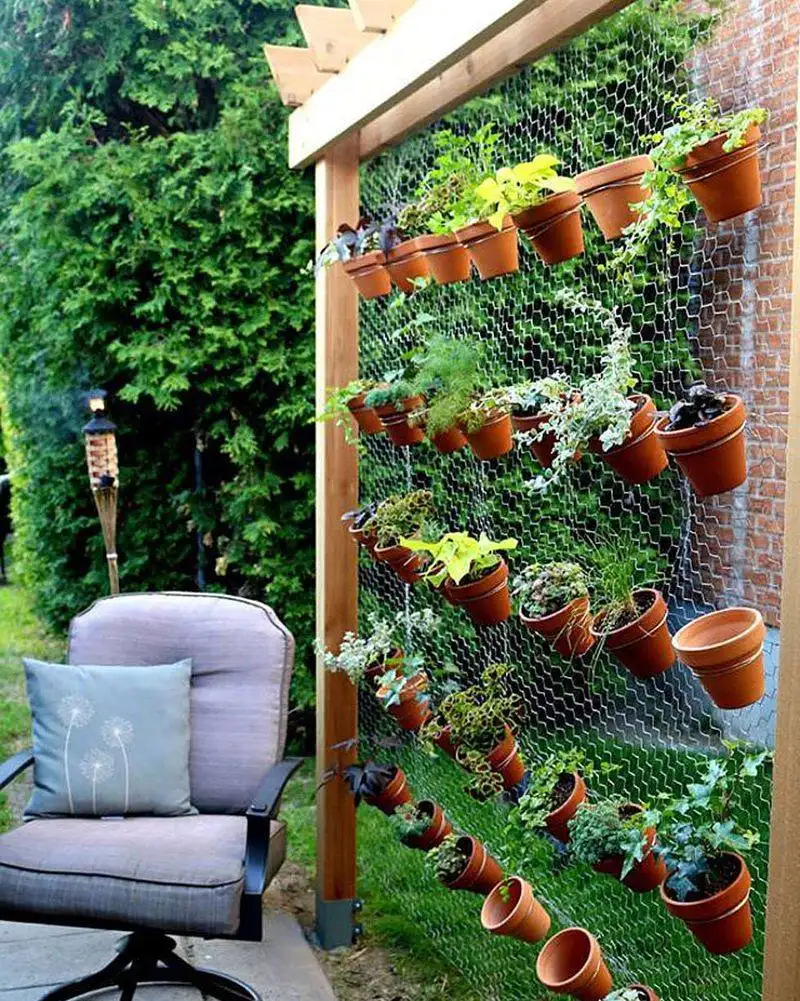
In the world of limited space, vertical gardens stand tall as a creative solution. Transform a dull wall or fence into a living canvas by arranging plants vertically. This technique maximizes space while adding a lush, green backdrop to your outdoor area. Vertical gardens can be easily crafted using recycled materials like pallets or old containers, making them both eco-friendly and budget-conscious. The vertical arrangement not only saves ground space but also creates a striking visual impact. Whether growing herbs, flowers, or succulents, this innovative approach brings life to overlooked spaces.
DIY Water Features
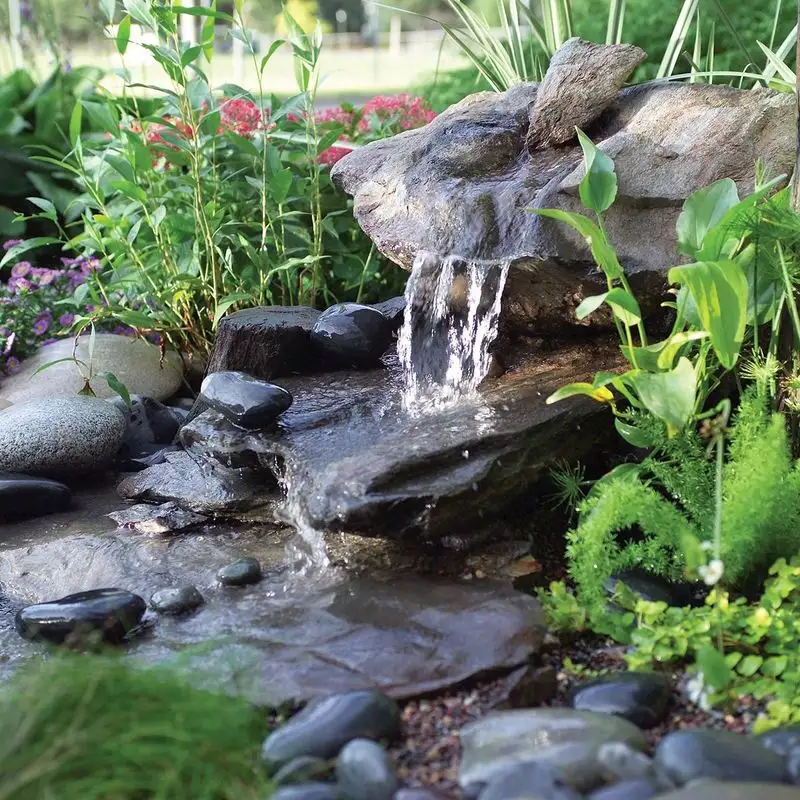
There’s something inherently calming about the sound of flowing water. A DIY water feature can bring that serenity to your garden without the hefty price tag. Using repurposed materials like ceramic pots or stones, you can create a unique water feature tailored to your space. As water gently cascades over the edges, it creates a soothing ambiance, turning your garden into a peaceful retreat. This personalized touch not only enhances your garden’s aesthetics but also provides a habitat for birds and other wildlife. Embrace the tranquility and charm of your very own water haven.
Edible Borders

Imagine stepping into your garden and picking fresh ingredients right from the edge of your path. Edible borders offer a delightful way to combine aesthetics with functionality. Planting herbs, vegetables, and edible flowers along the garden’s edges not only adds vibrant colors but also provides fresh produce at your fingertips. This approach makes the most of available space, ensuring that no inch goes to waste. It’s a practical and economical way to enhance your garden’s appeal while benefiting from homegrown ingredients. Incorporate edible borders to create a garden that’s both beautiful and bountiful.
Creative Mulching
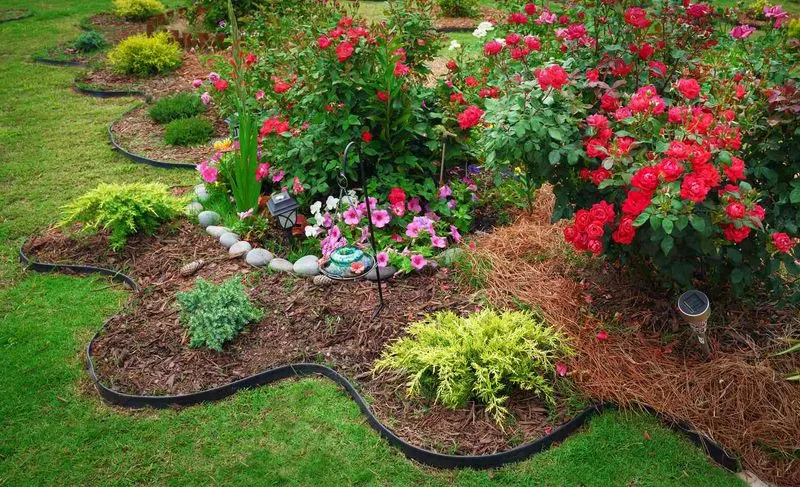
Mulching doesn’t have to be mundane. By using creative mulching techniques, you can enhance your garden’s appearance and health. Choose colorful wood chips or natural materials like straw and bark to add texture and contrast to your garden beds. Mulching helps retain moisture, suppress weeds, and improve soil quality, all without breaking the bank. It’s an affordable way to give your garden a polished and cared-for look. With a mix of colors and textures, creative mulching transforms ordinary garden spaces into vibrant landscapes full of life and visual interest.
Recycled Planter Creations
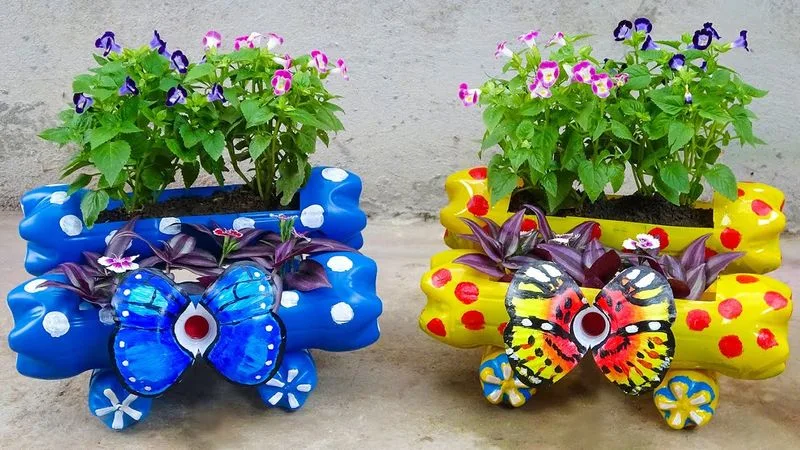
Why buy expensive planters when you can create your own from recycled materials? Old tires, pallets, or tin cans make fantastic plant holders. With a splash of paint, they become vibrant features in your garden.
This eco-friendly solution not only saves money but adds a unique touch. The creative process can be a fun project for the whole family.
Did you know? Using recycled materials for planters can help reduce waste and promote sustainability in gardening.
Living Fences
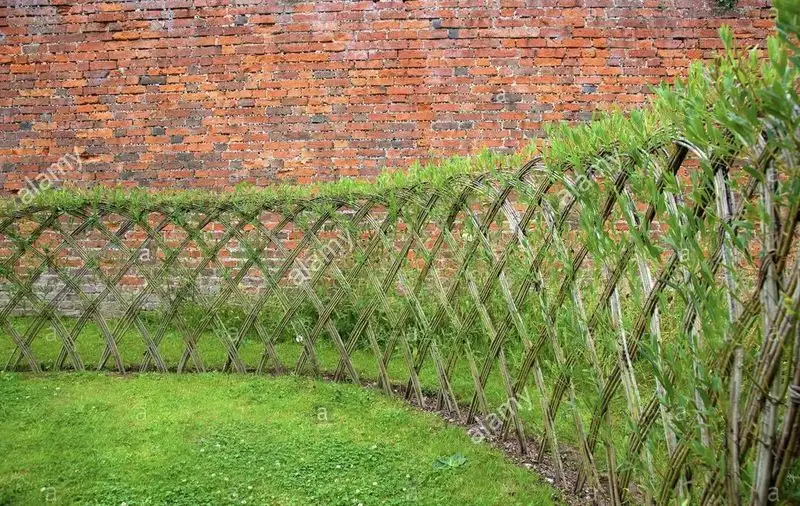
Privacy in your backyard doesn’t have to come from dull wooden panels. Living fences, composed of densely planted trees and shrubs, offer an attractive alternative.
They provide shade, reduce noise, and create a natural barrier that blends into the landscape. Plus, maintaining a living fence encourages biodiversity.
Interestingly, living fences have been used for centuries as sustainable and eco-friendly boundaries around properties.
Upcycled Garden Furniture

Revamp your outdoor space with upcycled garden furniture. Using reclaimed wood or metal, you can craft bespoke pieces that bring character and sustainability to your patio.
This approach not only saves money but also gives a second life to materials that might otherwise end up in a landfill.
The charm of upcycled pieces lies in their uniqueness and the personal touch they bring to any garden setting.
Herb Spiral Gardens

Herb spiral gardens are a clever way to maximize space and grow a variety of herbs. Constructed in a spiral shape, they create different microclimates suitable for diverse plants.
This compact design allows for easy access and efficient watering. Not only do they add visual interest, but they also keep herbs fresh and within reach for culinary adventures.
Herb spirals are an ancient gardening technique, popular for their space-saving and aesthetic appeal.
Fairy Light Magic

Transform your garden into an enchanting space with fairy lights. Draped over trees or along pathways, these lights add a magical ambiance during the evening.
They’re affordable, easy to install, and available in solar-powered options for energy efficiency. Whether for parties or quiet nights, fairy lights bring warmth and charm.
Their soft glow can turn any garden into a whimsical retreat, perfect for relaxation or entertaining.
Pallet Seating Areas
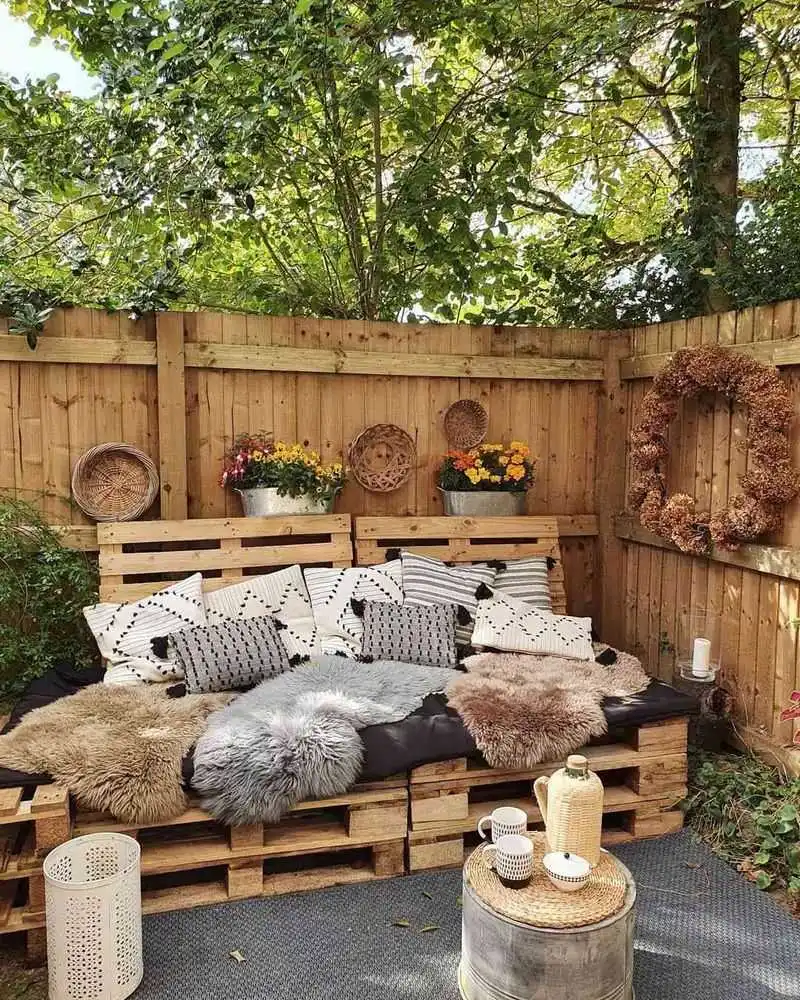
Pallets are a versatile and budget-friendly option for creating outdoor seating. With some paint and cushions, they transform into comfortable and stylish furniture.
Perfect for patios or garden nooks, pallet seating areas offer a rustic charm that invites relaxation.
Not only are they practical, but they’re also an eco-friendly choice, as they reuse materials that might otherwise be discarded.
Wildflower Meadows
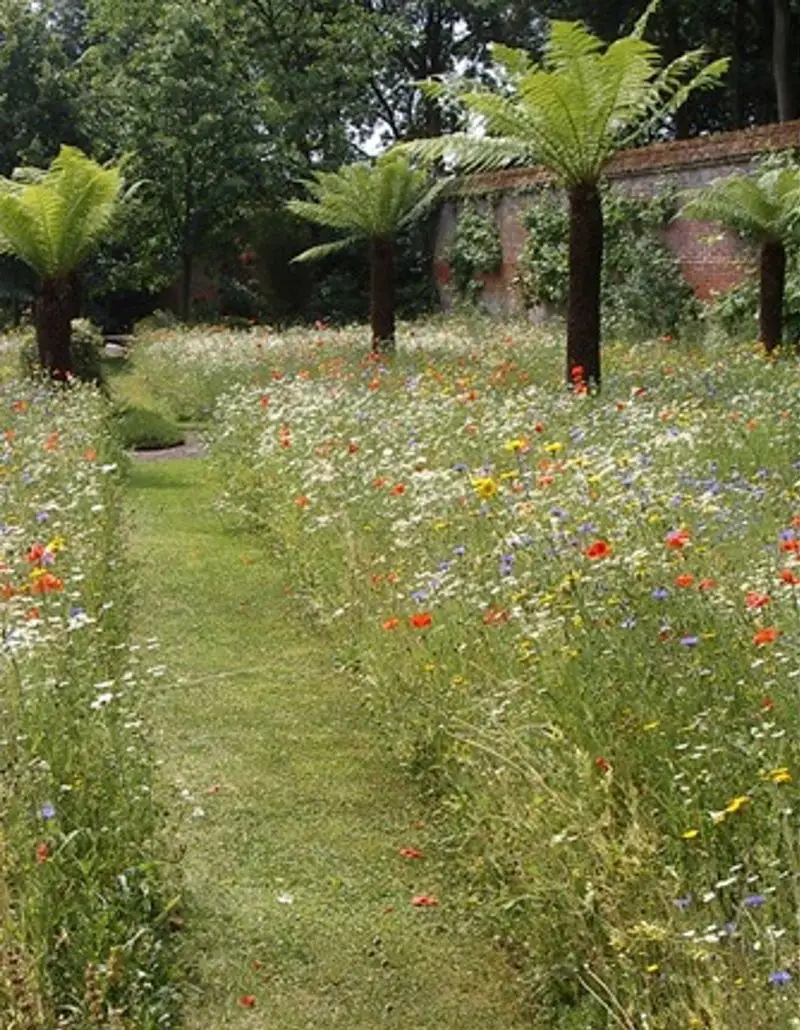
Introduce a splash of color to your garden with wildflower meadows. These areas require minimal maintenance and attract pollinators like bees and butterflies.
Creating a wildflower meadow is a cost-effective way to cover large areas while supporting local biodiversity.
Wildflowers bring a natural beauty that evolves with the seasons, offering a dynamic and ever-changing landscape.
Mirror Illusions
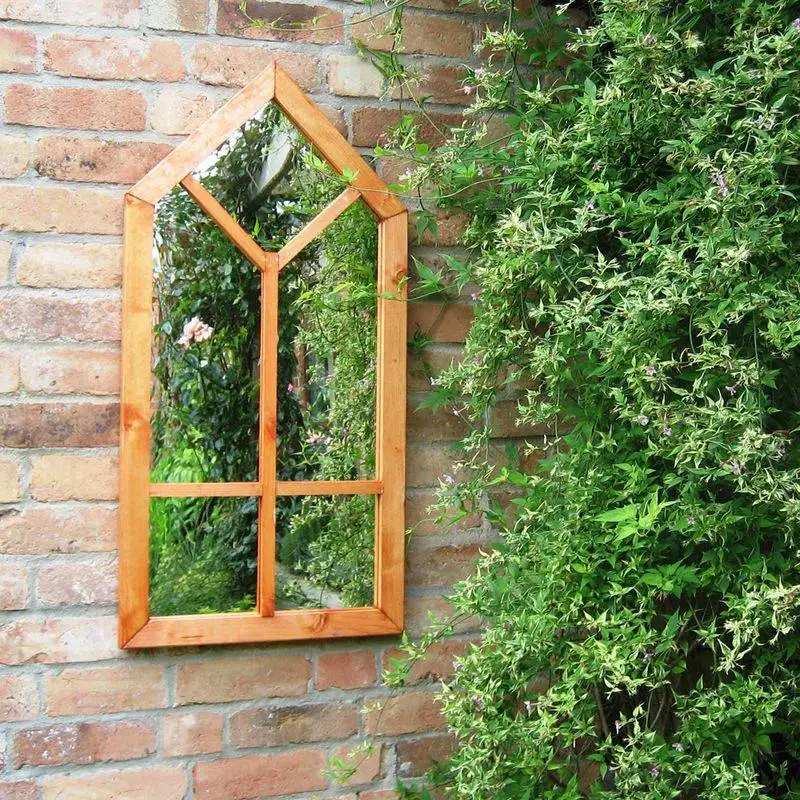
Mirrors can work wonders in small gardens by creating the illusion of depth and space. Strategically placed, they reflect light and greenery, making areas appear larger.
This trick is cost-effective and adds a unique visual element. Mirrors can be framed or unframed, depending on the desired effect.
Incorporating them into garden design offers a creative way to enhance the outdoor experience.
Colorful Pebble Paths
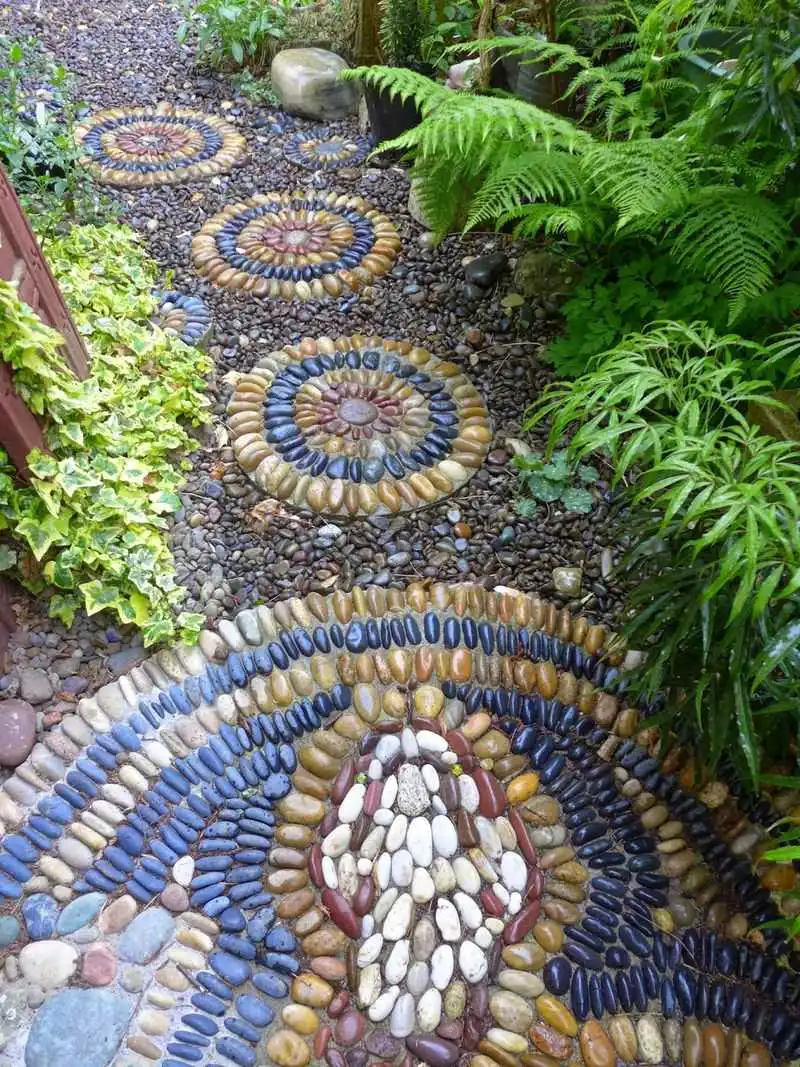
Create eye-catching pathways with colorful pebbles. These paths add texture and color, guiding visitors through your garden in style.
Pebbles are durable, easy to maintain, and can be arranged in patterns for added interest. This affordable alternative to traditional paving brings a playful touch to any landscape.
The variety of available colors allows for endless customization to match your garden’s theme.
Climbing Roses
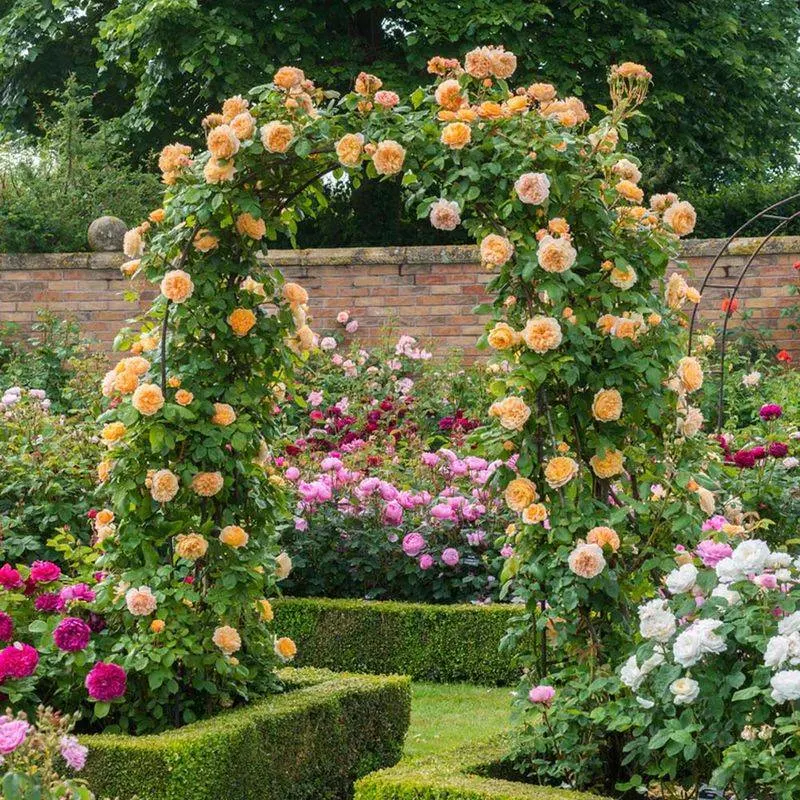
Climbing roses are a timeless addition to any garden. With their vibrant blooms and rich fragrance, they can transform walls or trellises into living artworks.
These roses create vertical interest and draw the eye upward, making them perfect for small spaces.
Interestingly, climbing roses have been a favorite in gardens since ancient times, cherished for their beauty and elegance.
Natural Pergola Shades
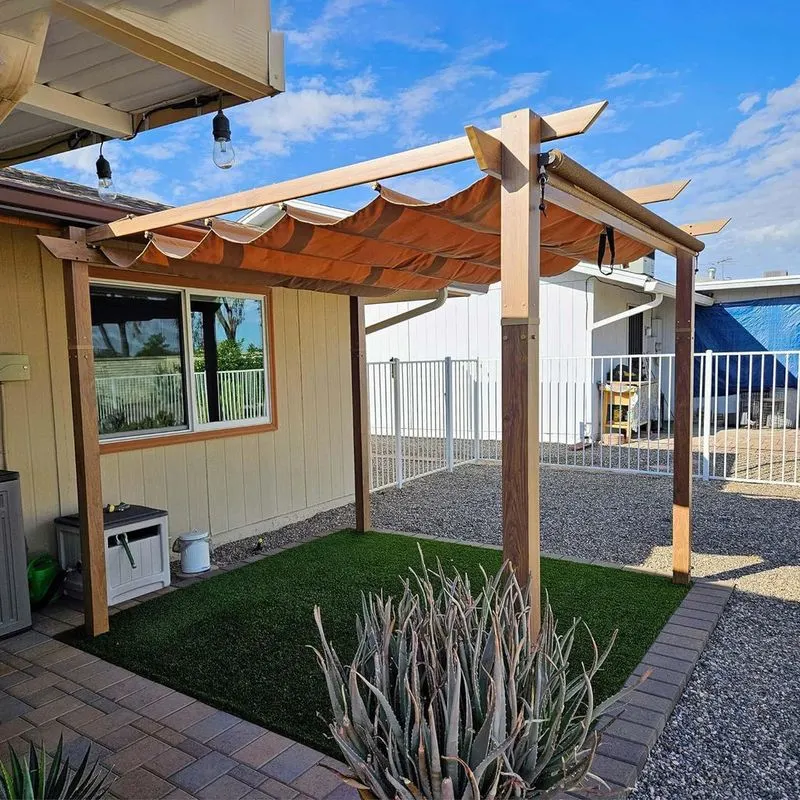
A pergola draped with lush vines creates a natural shade that offers both beauty and comfort. This eco-friendly solution provides relief from the sun while enhancing the garden’s aesthetic.
Vines like wisteria or grape add color and texture, making the pergola a focal point.
Natural pergola shades blend seamlessly with the environment, creating a serene and inviting outdoor space.
Zen Rock Gardens

Zen rock gardens bring tranquility and simplicity to outdoor spaces. Composed of gravel, stones, and minimalistic plants, they create a peaceful retreat.
These gardens emphasize the beauty of simplicity and require little maintenance. Raking the gravel offers a meditative practice, enhancing the calming effect.
Zen gardens are rooted in Japanese culture, celebrated for their serene and contemplative nature.
Bee-Friendly Plantings
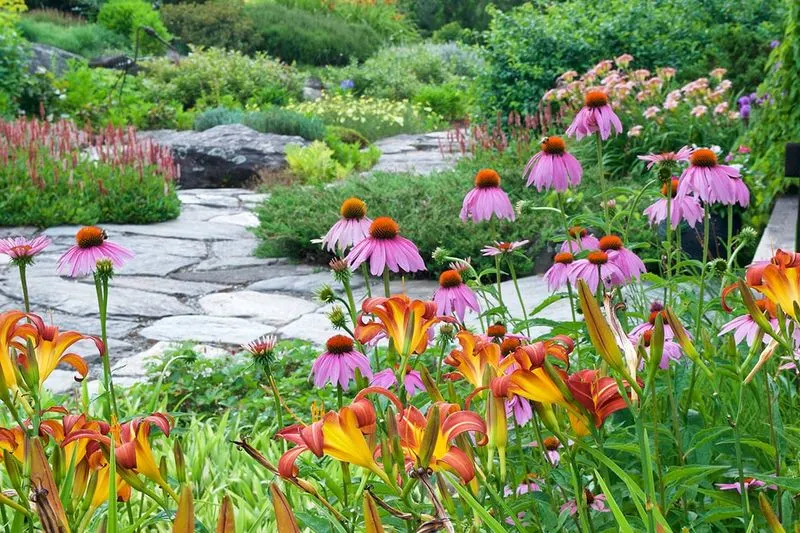
Creating a bee-friendly garden supports local ecosystems and adds life to your outdoor space. Planting a variety of flowers ensures a continuous food source for bees.
Incorporating bee houses or water stations can further enhance their habitat. This environmentally conscious choice benefits the garden and the planet.
Bee-friendly gardens are not only beautiful but vital for maintaining healthy pollinator populations.
Compact Vegetable Patches
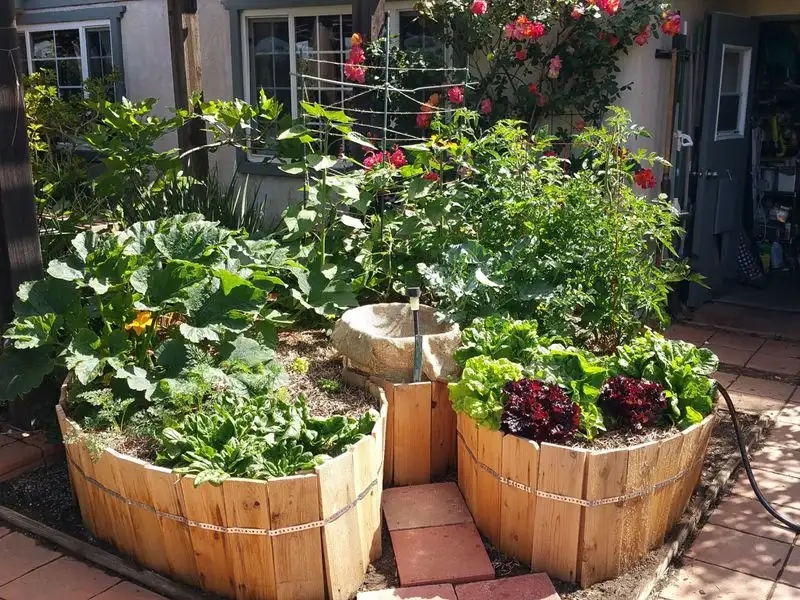
Even limited space can yield a bountiful harvest with compact vegetable patches. Raised beds or containers allow for efficient use of space and easy access.
Growing your own vegetables is cost-effective and rewarding, providing fresh produce right at your doorstep.
This approach to gardening encourages self-sufficiency and connects people with their food source, fostering a deeper appreciation for nature.
Rustic Garden Arbors
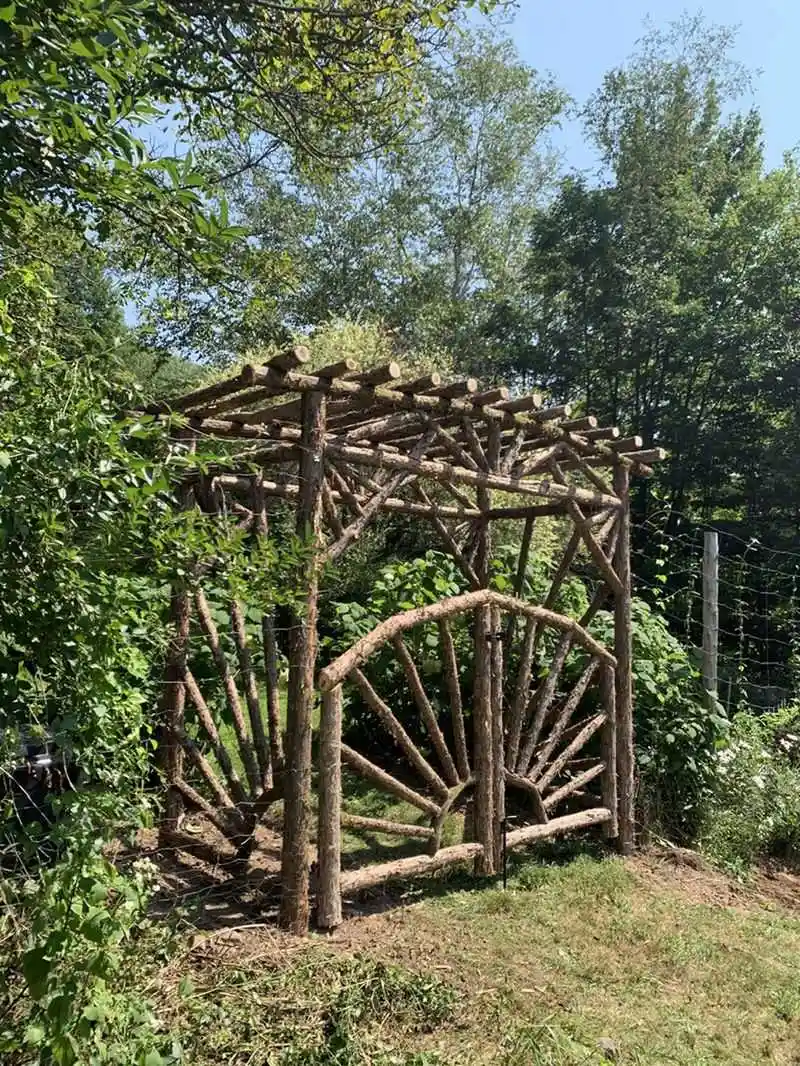
Garden arbors add charm and structure to any landscape. Covered in flowering vines, they create a picturesque entrance or focal point.
Rustic designs, made from natural materials, blend seamlessly with the garden environment. They’re affordable and can be customized to fit various styles.
Garden arbors have been used for centuries to define spaces and guide visitors through enchanting garden paths.
Reclaimed Brick Edging

Reclaimed brick edging provides a classic and sustainable way to define garden beds. This technique uses old bricks to create a rustic border that adds character.
Brick edges are durable and weather-resistant, offering a long-lasting solution. They’re perfect for gardeners looking to combine sustainability with style.
The use of reclaimed materials also reduces waste, making it an environmentally friendly choice.
Hanging Basket Bonanza
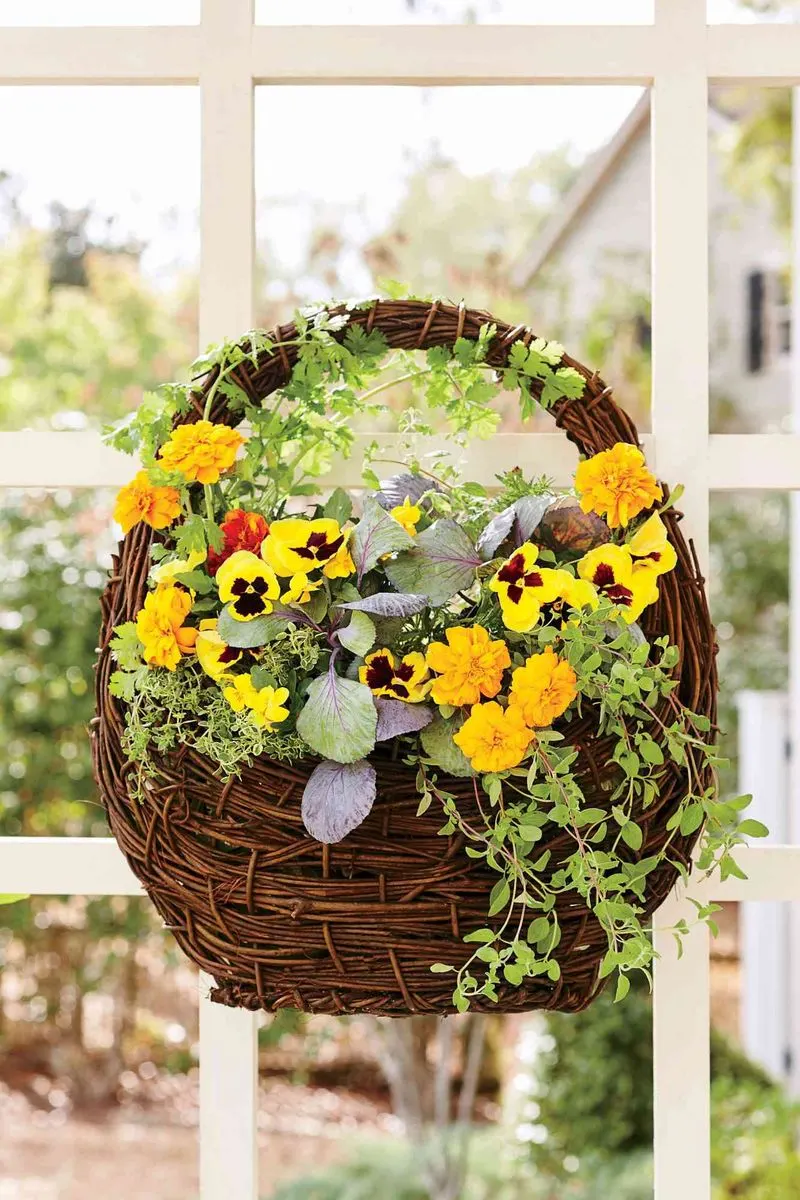
Hanging baskets offer a versatile way to add color and height to any garden. Filled with cascading flowers, they bring life to walls and fences.
Baskets can be easily customized with different plants, allowing for seasonal changes. They’re perfect for small spaces where ground planting isn’t an option.
Hanging gardens have been enjoyed for centuries, celebrated for their beauty and adaptability.
DIY Stepping Stone Pathways
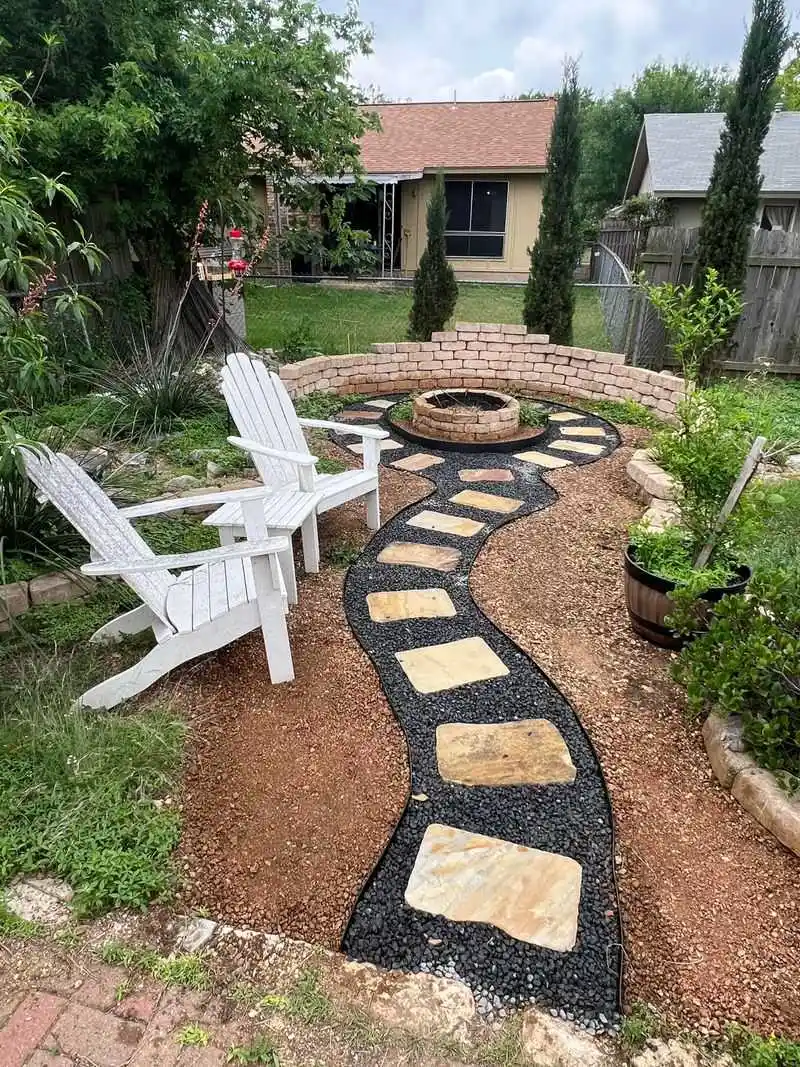
Creating a stepping stone pathway is an artistic endeavor that brings a whimsical touch to any garden. By using reclaimed materials like old bricks or stones, you can design a unique path for minimal cost. Imagine a meandering path leading through lush greenery and vibrant flowers.
Each step can be a work of art, inviting exploration and curiosity. This DIY project not only enhances your garden’s beauty but also provides a functional walkway. Personalize each stone with engraved designs or colorful paints for added charm. Your garden will have an inviting and playful atmosphere.

